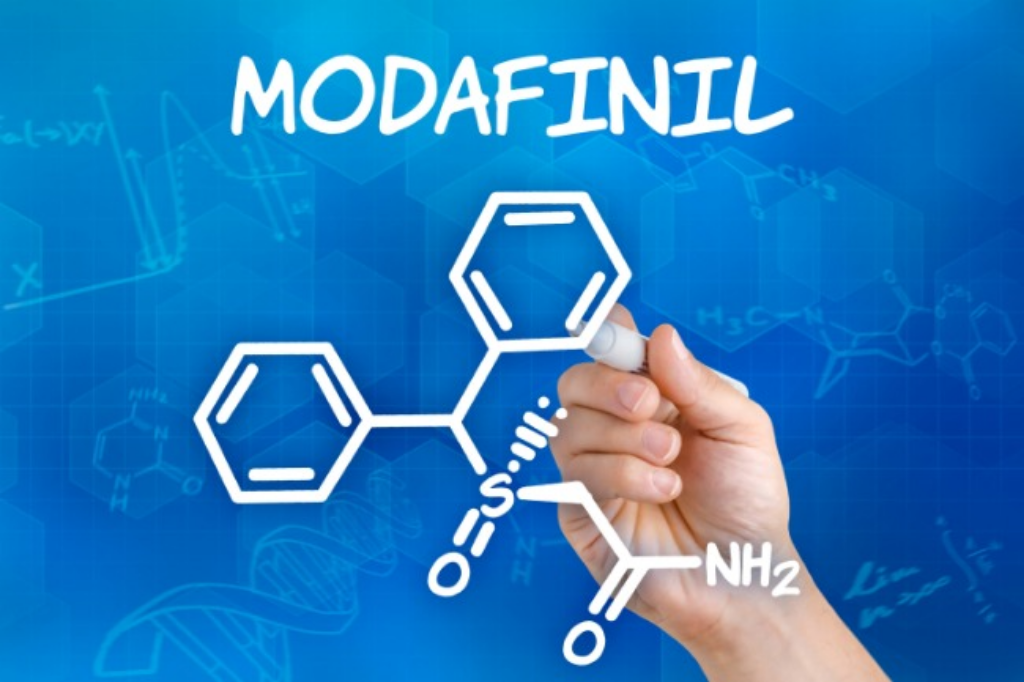A person who keeps dozing off in the day reaches for modafinil for the same reason a person who can’t sleep at night goes for sleeping pills. Given that it does its job of keeping you wide awake and improving cognitive function well, it’s no surprise some consider it as a ‘nootropic’ or smart drug—one of the most common to boot.
Yet, despite years of research into this drug, experts still can’t put their finger on how it really works. Instead, they have tons of evidence implying that it effectively manages sleep disorders. Some ongoing trials even suggest that modafinil is a viable treatment for several mental health conditions like schizophrenia and substance use disorder.
There’s a lot to consider about modafinil before considering buying it online. This article will explain the nuts and bolts of modafinil and ideas on how it regulates sleep.
Background
The drug’s origins can be traced back to France in 1974 when chemists at a pharmaceutical company discovered a new molecule named adrafinil. Preliminary tests on mice showed that adrafinil caused a significant increase in motor activity without the usual effects when taking stimulants such as increased blood pressure.
Modafinil wouldn’t be discovered until two years later when another pharmaceutical company was looking for a substance that could improve cognitive function among the elderly. By the early 1980s, both drugs entered the market, with modafinil prescribed for treating hypersomnia.
The difference between the two drugs stems from their potency—modafinil is more potent than adrafinil. A 100 mg dose of modafinil can induce the same effect as a 300 mg dose of adrafinil. Modafinil also takes effect more quickly, kicking in within 90 minutes of taking the drug, unlike 150 minutes for adrafinil.
However, modafinil’s potency is enough for the federal government to classify it as a Schedule IV drug. While less likely to be abused than Schedule III drugs and above, modafinil requires a doctor’s prescription. It’s also quite pricey, with 20 tablets costing on average USD$300.

Modafinil’s way of keeping people wide awake remained largely a mystery until the early 1990s when the first studies were published. These studies found that the drug has three known effects:
Inhibits dopamine reuptake
Experts classify modafinil as a dopamine reuptake inhibitor (DRI), albeit a weak one at that. As a DRI, modafinil prevents the cell that received the dopamine from releasing it back to the one that sent it. This effectively prevents the reuptake, causing the other cell to produce more dopamine to compensate. As a result, dopamine levels in the space between the cells, known as a synaptic cleft, increase.
Several studies have highlighted the role of dopamine in wakefulness. For one, it stops the pineal gland from releasing norepinephrine, a prerequisite for producing melatonin, which regulates your sleep cycle. On top of that, people with diseases such as narcolepsy tend to be drowsy since they limit dopamine production.
A 2014 study published in the International Journal of Neuropsychopharmacology found that the DRI rate for modafinil ranges between 51.4% for a 200 mg dose and 56.9% for a 300 mg dose. These figures are comparable to methylphenidate, a stimulant widely used to manage attention deficit disorder (ADD) and attention deficit hyperactivity disorder (ADHD).
Mitigates epileptic seizures
Researchers at the Brigham and Women’s Hospital in Boston in 2011 tested the effects of modafinil on 205 epilepsy patients through a ten-year medication regimen. While a few began experiencing exacerbated epilepsy symptoms after taking the drug, the study found no link between the drug and the onset of seizures among the majority of the patients.
Studies have established that excessive daytime sleepiness (EDS) is a common symptom of epileptic seizures. The disease tends to disrupt a person’s sleep at nighttime, resulting in unusual drowsiness during the day. EDS is also a side effect of antiepileptic drugs.
The anticonvulsant properties inherent in modafinil enable it to limit brain activity when needed, reducing the frequency of seizure episodes. Experts believe that modafinil’s low likelihood for abuse gives it the edge over most known medications.
Enhances cognitive functions
When the industry marketed modafinil as a smart drug that can enhance one’s cognitive function, it understandably attracted a fair share of skepticism. As mentioned previously, researchers have yet to fully nail down how the drug works, even with the increasing amount of scientific evidence becoming available.
Nevertheless, such mounting evidence points to just that. A systematic review of two dozen papers between 1990 and 2014 found that modafinil improved a person’s planning and decision-making skills, more so when doing more complicated tasks for an extended period. It’s also worth noting that researchers saw these effects on healthy people instead of their sleep-deprived counterparts.
It’s still anyone’s guess how modafinil works to improve one’s thinking. But the review’s authors said a strong theory is that it manages the concentrations of catecholamines in the brain. Dopamine is one such catecholamine.
Side Effects
Researchers found that modafinil doesn’t induce as many side effects, if any, as other drugs. For this reason, the drug is seeing applications beyond prescription medicine. In 2003, the U.S. Air Force approved its use among aircrews flying hours-long sorties, replacing the more potentially abusable dextroamphetamine.
That said, modafinil’s side effects are worth noting. According to Dongsoo Kim, a professor at the Korea Air Force Academy, the wakefulness effects of modafinil can increase blood pressure and resting heart rate. This can mean people with heart disease might not be allowed to take this drug for whatever reason.
Kim also iterates that no smart drug can replace adequate sleep, no matter how effective or less likely abusable it is. Modafinil may help with daytime drowsiness but not with the other benefits that proper rest provides, mainly boosting the immune system. Seeking modafinil for reasons other than narcolepsy or other qualifying conditions can imply that the person is under high or severe stress, which modafinil isn’t designed to treat.
Conclusion
Despite the need for further study, modafinil has more or less proven itself to be a viable drug for regulating sleep. By altering how the nervous system utilizes brain chemicals such as dopamine, it enables a person to stay awake during the day and get a good night’s rest at night. Improving their cognitive skills comes as a welcome bonus.
However, its high cost and status as a Schedule IV drug limit its use to anyone with a doctor’s prescription. It’s improbable that modafinil will see over-the-counter use in the coming years, though the continually piling research highlighting its positive effects might change that. As such, adequate sleep remains the better option over any wonder drug.
As the most comprehensive sleep lab in Alaska, Alaska Sleep Clinic is reaching out to you to be proactive in making our roads safer for all Alaskans. If you want to know more about safety for truckers with sleep apnea, call us today for an evaluation.












